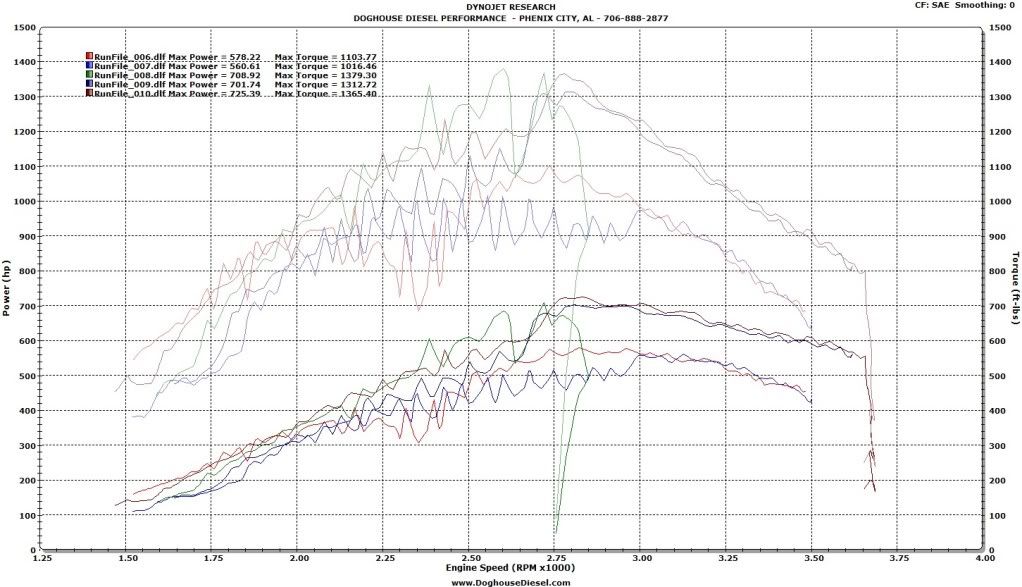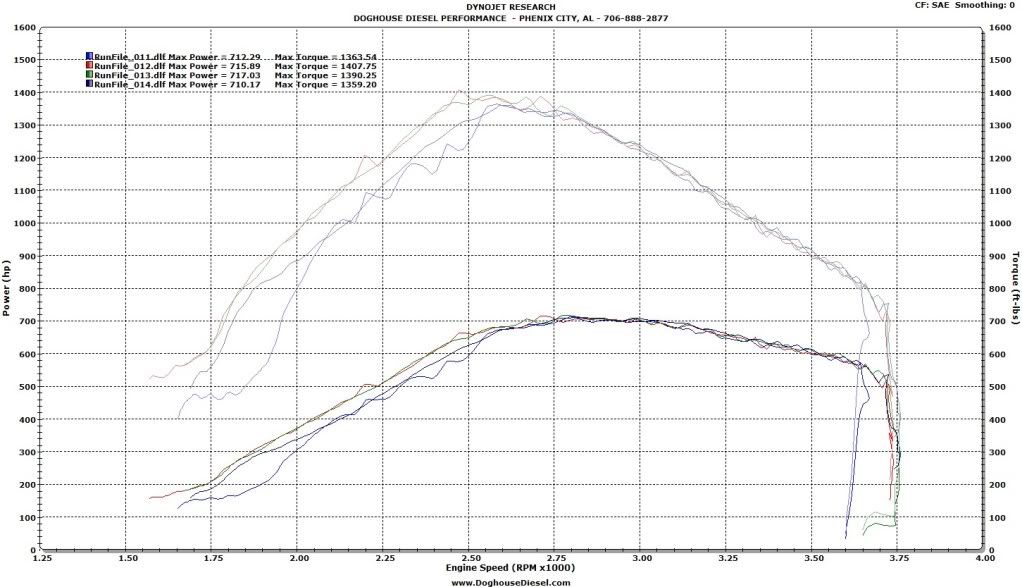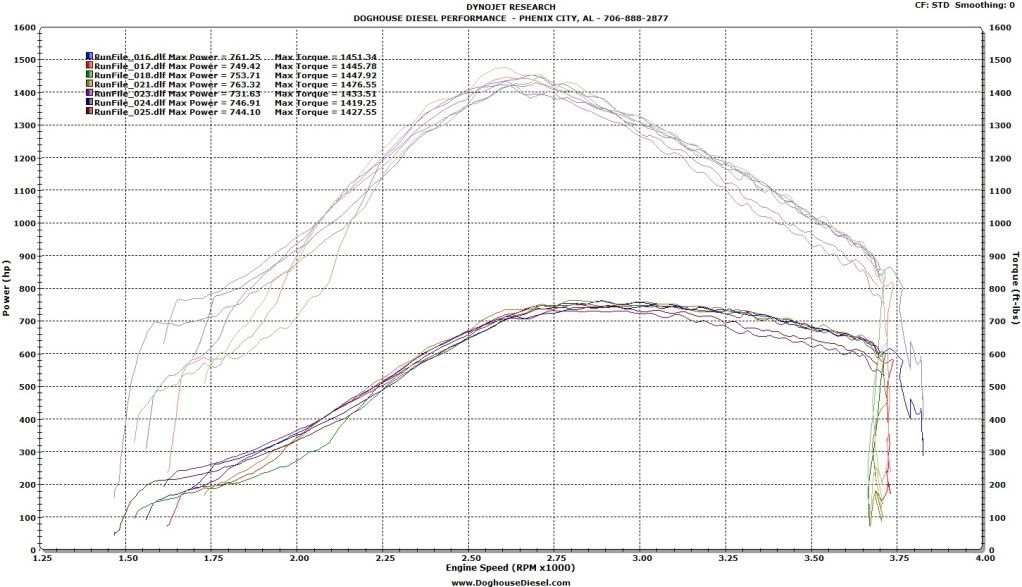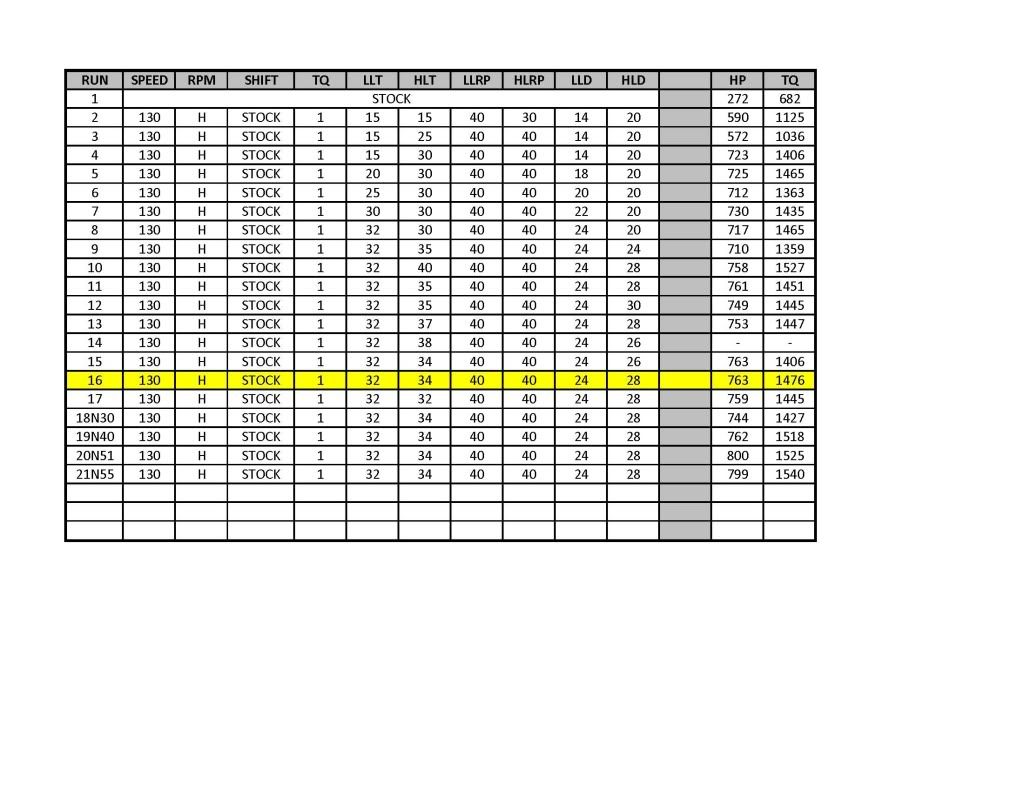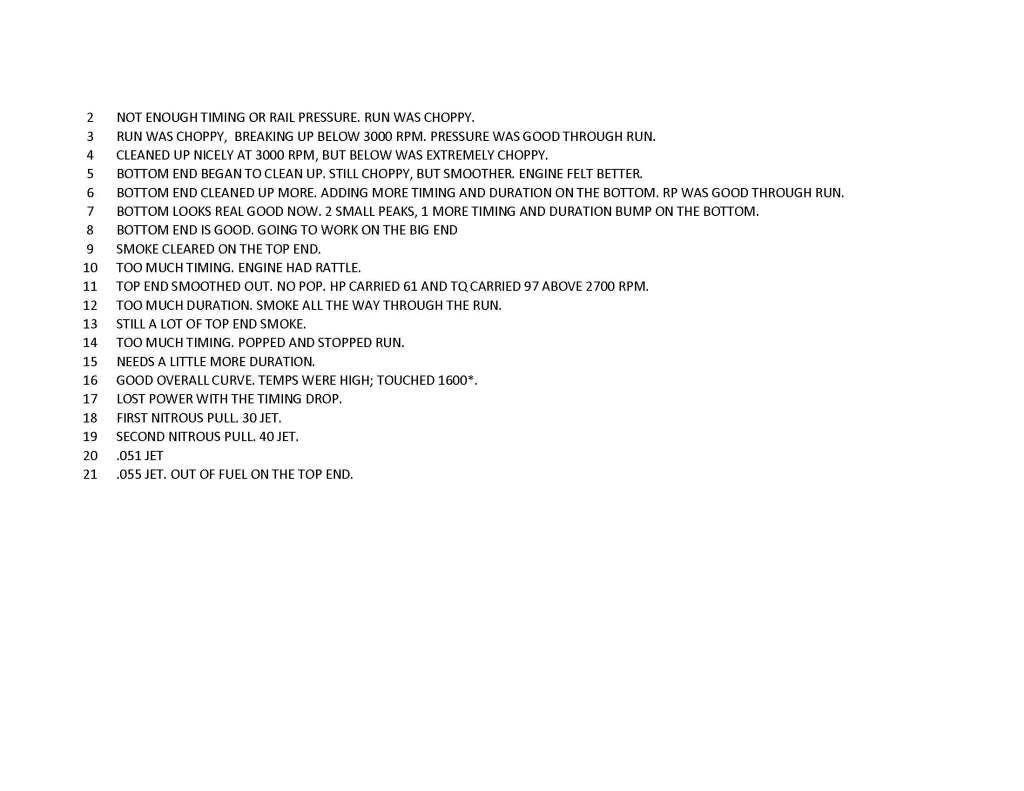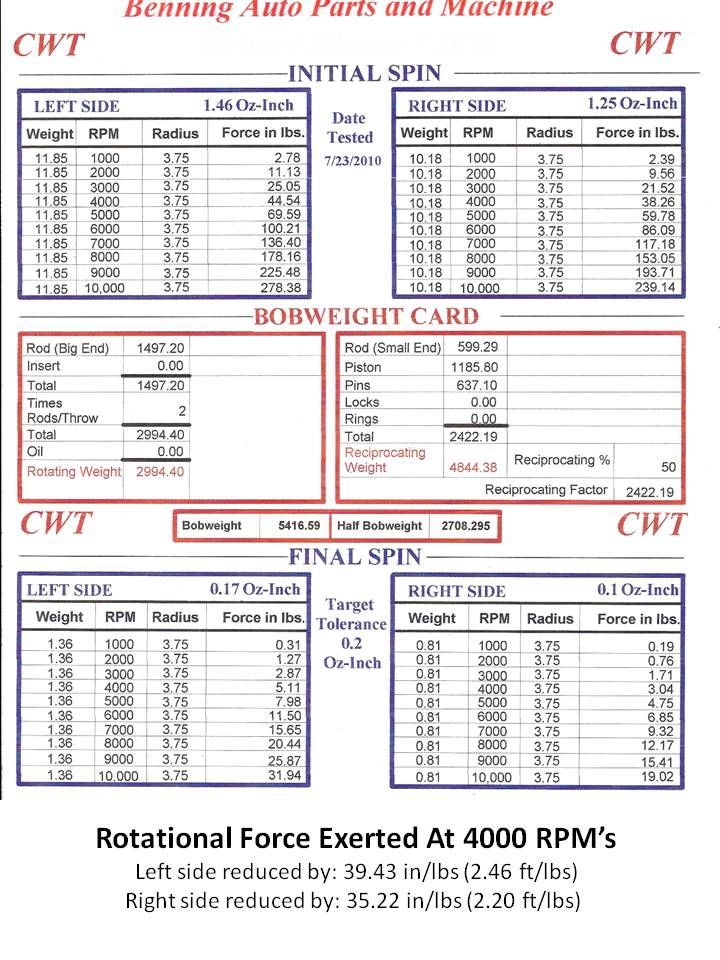JasonCzerak
Active member
- Joined
- Aug 10, 2006
- Messages
- 14,827
Jason, this is just me thinking out loud, but with the size of your injectors, that's not enough rail pressure....that's where that smoke show is coming from.
You're bouncing around alot on these settings and it makes it tough to dial in any one specific parameter. 1 - 2 number changes on each parameter and make a pull, small change, make a pull, small change, make a pull.
One hour on the dyno won't dial it in. Hell, just with the time it takes to re-flash and let the the turbos cool a bit, you can only get about 6 good pulls in an hour and still be consitent.
If I'm tuning, I PLAN on AT LEAST 3 hours at a time. The first time tuning this SSR took me almost 6 hours. BUT, it pays off in the end. You're not screwing around trying this and that for weeks on end trying to do it on the road.
Bit the bullet, schedule the time and READ the dyno sheets and note the changes on each pull.
I spent about 6 hours between Friday and Saturday on the dyno. Saturday's dyno was spent more or less 1 or 2 numbers at a time. Tho, on the dyno jet with no brake and my first time driving on a dyno jet, there were 2 learning curves right there.
I plan to see what marco fixes and updates in the next release and get a few more hours on the dyno dynamics. We'll need to adjust the rate at which it lets the truck accelerate for sure and I'll start higher up in boost, like near 58psi in 6th. I should have my water injection re-installed soon too!
However, I do enjoy trying different approaches. to be honest, running a large low end duration number is the only thing left that I didn't do to see how things run. And it just happens to run very well considering the other combinations I've tried.
As far as the rail pressure numbers, I'll bump them back up. I need to make a few highway pulls and watch EGT and rail. But the rail hang is unacceptable, if the motor can't de-accelerate at a reasonable rate, I need to lower that rail and take what ever loss in hp comes with it.
What I think I happened with the smoke show was around 2800rpm (or so) is what seems to be a consistent transition to HL mode. WOT or not. power picks up at that point. with my last setting I was WOT at 2200rpm on boost and let it pull until I could and it picked up power suddenly. when I let off it was over 3000. Just like in the dyno graphs. Now this occurs even at very very very light throttle if you run the rpm band, normally a puff of smoke shoots out. I'm sure that's what happened because I was on my way off the throttle and looked back there was a small cloud
More playing around to come.
Last edited:

